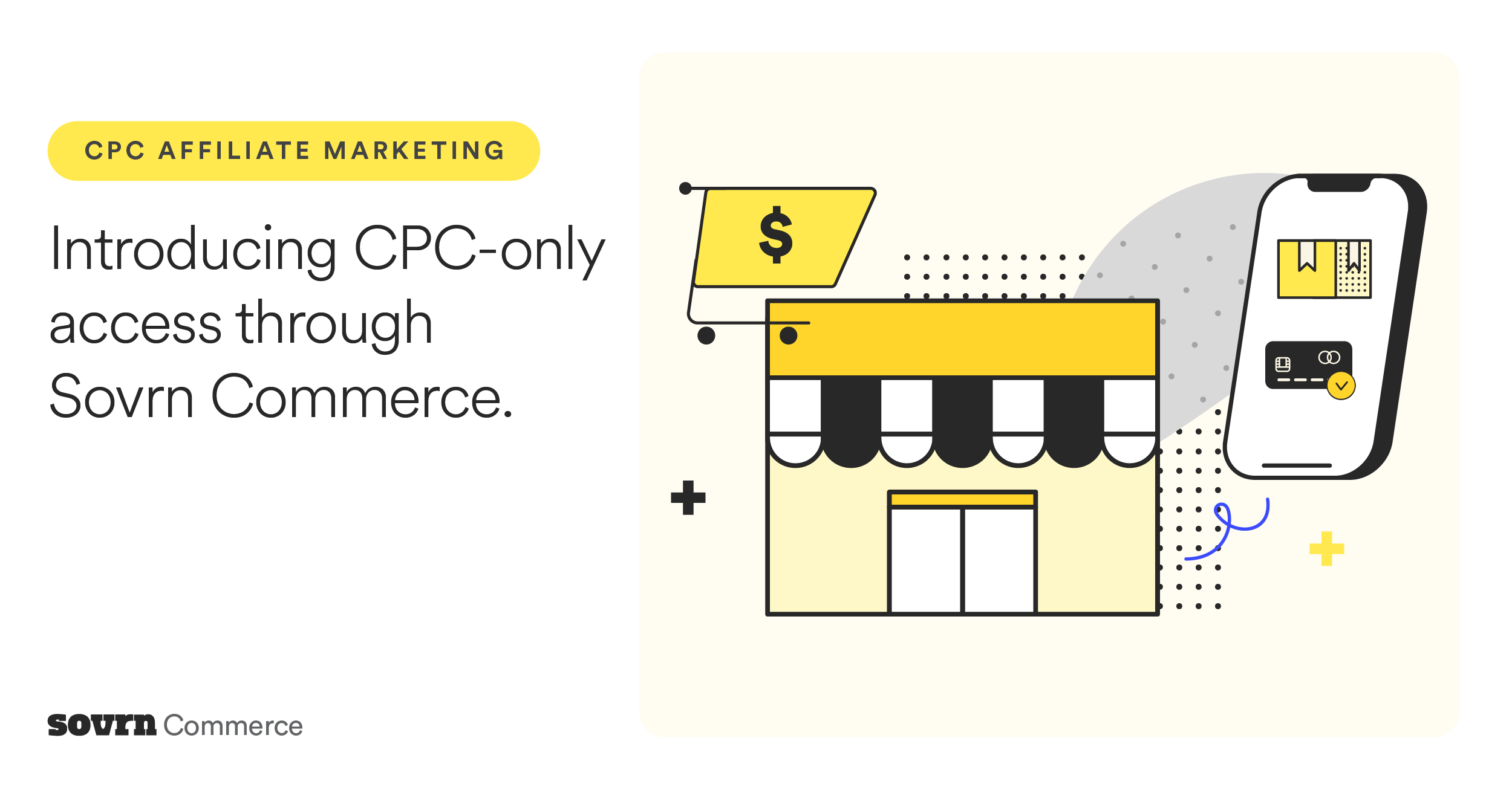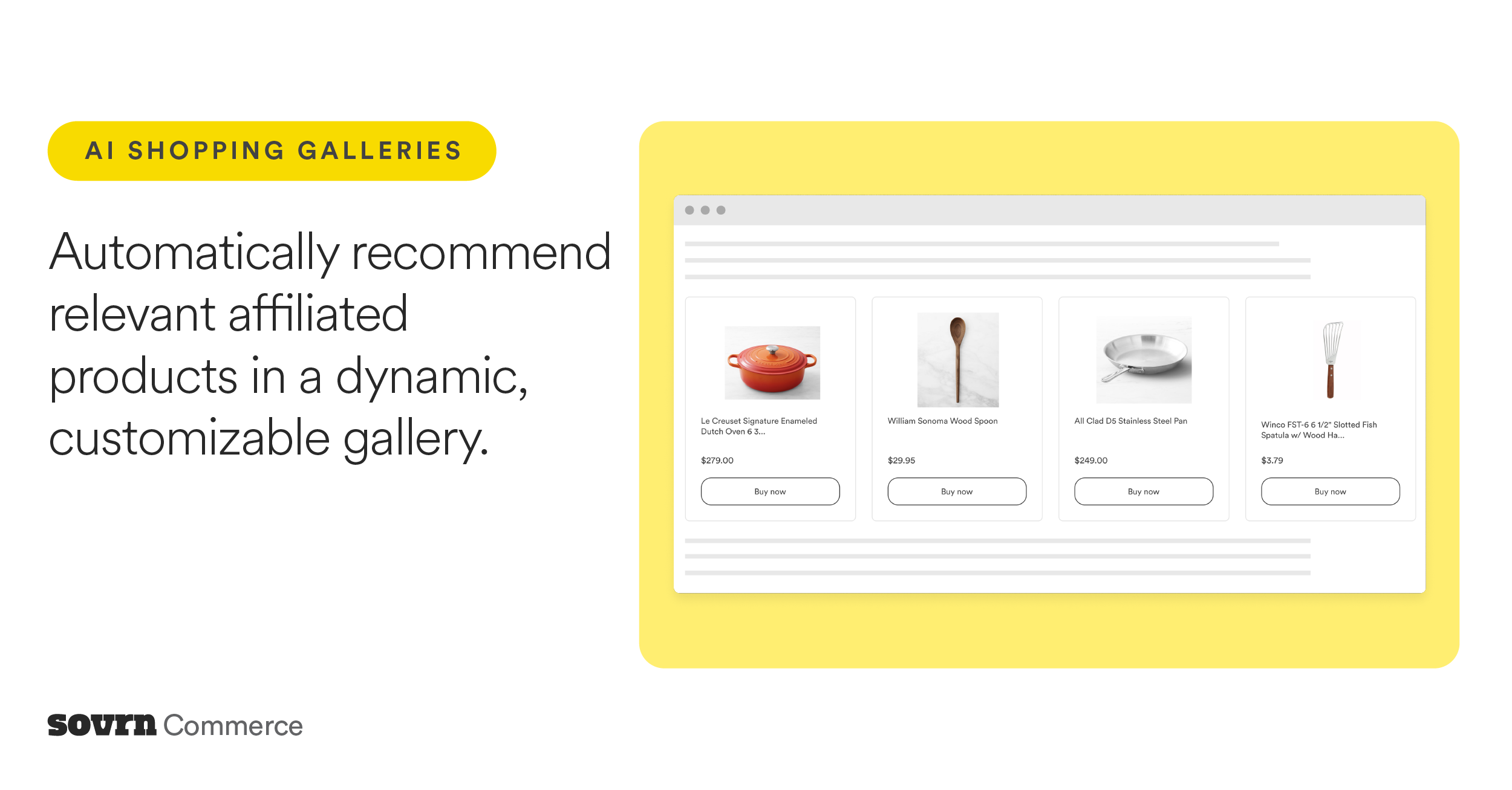You’ve started sharing affiliate links—congrats! This is an exciting first step toward monetizing your content, and you’ve already laid the groundwork.
But if you’re wondering why some posts convert better than others or how to turn occasional commissions into consistent income, you’re not alone.
We’ve pulled together research-backed strategies designed specifically for creators who are new to affiliate marketing but ready to level up. These tips will help you increase affiliate conversions without losing your audience’s trust, so you can grow your income and your influence at the same time.
How to calculate your affiliate conversion rate
Before jumping into creative strategies, establish a solid grasp on the data—it’s the key to knowing what’s actually working.
Your affiliate conversion rate measures how many people click your affiliate links and complete a desired action, such as:
- Making a purchase
- Signing up for a free trial
- Submitting their email
It’s one of the most important metrics for understanding how well your content drives results.
The affiliate conversion rate formula
You’ll need two key data points to calculate your conversion rate:
- Number of conversions: How many people followed through on the desired action.
- Number of unique clicks: How many individual users clicked on your affiliate link.
Then, use this simple formula:
For example, if 20 people complete a purchase after 500 unique clicks, your conversion rate would be four percent.
Track your rate consistently to understand how well each piece of content is performing and where improvement is needed.
Why your affiliate conversion rate matters
Affiliate conversion rate shows how effectively your content turns interest into action. It reveals whether your recommendations are resonating with your audience and helps you optimize your strategy based on real performance.
Know how your affiliate programs attribute conversions
Not every click counts the same. Different affiliate programs use different attribution models to decide who gets credit for a sale.
Commonly used models include:
- Last-click: Gives credit to the last affiliate link the customer clicked before buying.
- First-click: Attributes the conversion to the first affiliate link the customer clicked in their journey.
- Multi-touch: Shares credit across multiple clicks or touchpoints that influenced the customer before the purchase.
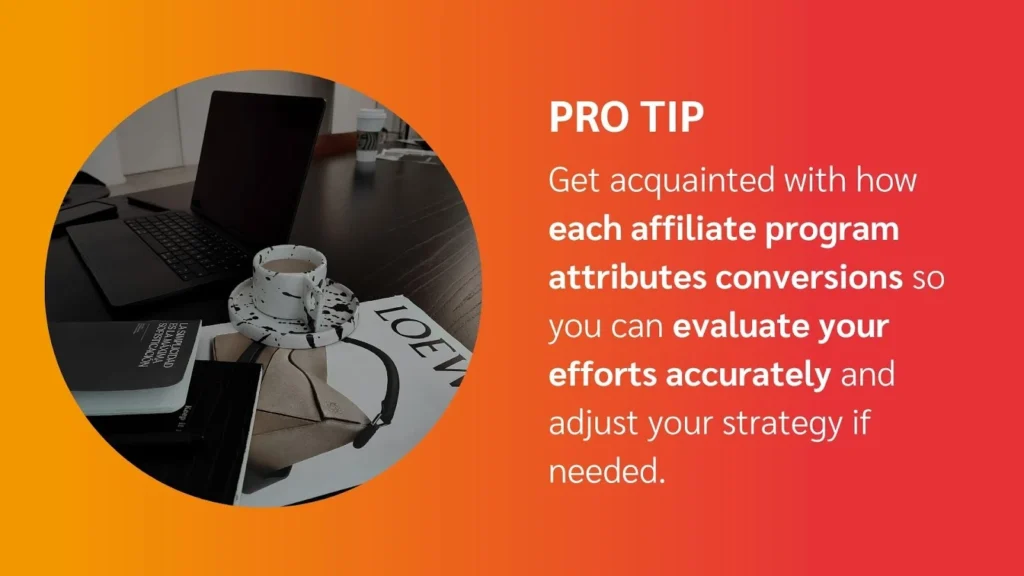
Supporting metrics help you see the full picture
While conversion rate is key, it doesn’t tell the whole story. Keep an eye on supporting metrics like:
- Total earnings: Your overall affiliate revenue shows the total income generated from your partnership, helping you track financial growth over time.
- Earnings per click (EPC): How much you’re earning on average for each click helps you understand your audience’s motivation to buy and the quality of the traffic you send.
- Click-through rate (CTR): The percentage of people who click on your links after seeing your content indicates whether your content and call-to-actions are compelling and effective at grabbing initial interest.
- Average order value (AOV): Knowing how much customers are spending when they buy through your links reveals which products or promotions lead to more valuable purchases.
Analyzing these metrics together gives you a complete picture of how you’re doing, allowing you to tweak your strategy and double down on the partnerships and content that really work.
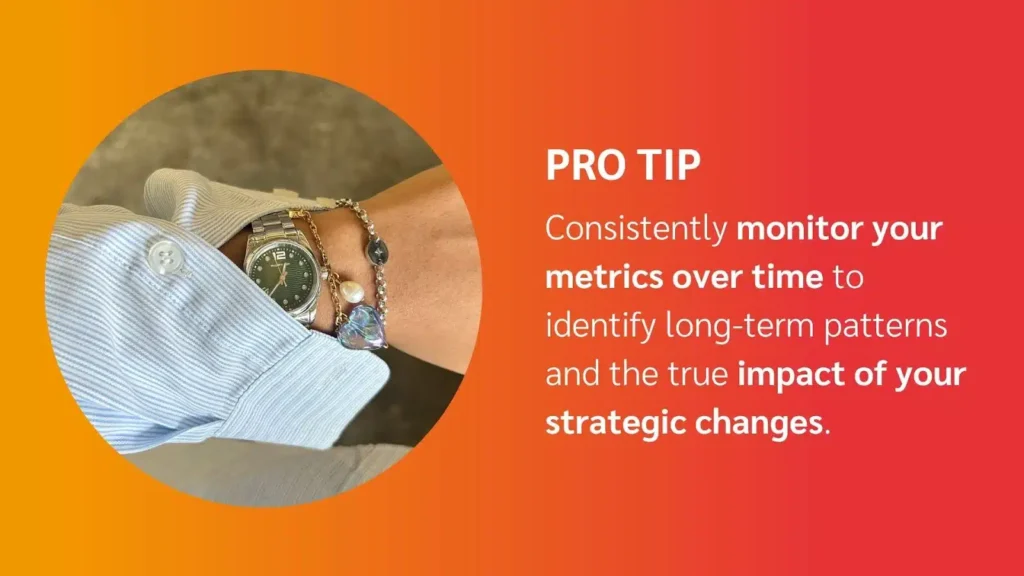
5 research-proven ways content creators can increase affiliate conversions
Now that you know your conversion rate and have a clear starting point, here’s how you can boost your affiliate performance. These research-driven strategies will strengthen your audience connection and level up your content.
Strategy 1. Prioritize building unshakeable trust with your audience
Trust is earned, and as a creator, it’s your most valuable asset. Eighty-nine percent of consumers trust personal recommendations, so your success hinges on cultivating genuine credibility.
Research consistently reveals audiences prioritize transparency (57 percent), integrity (51 percent), and consistency (44 percent) when deciding who to trust. Maintaining authenticity isn’t just the right thing to do—it also directly affects your affiliate income.
When your audience believes you sincerely share their interests, they’re significantly more likely to follow your recommendations, click your links, and complete purchases.
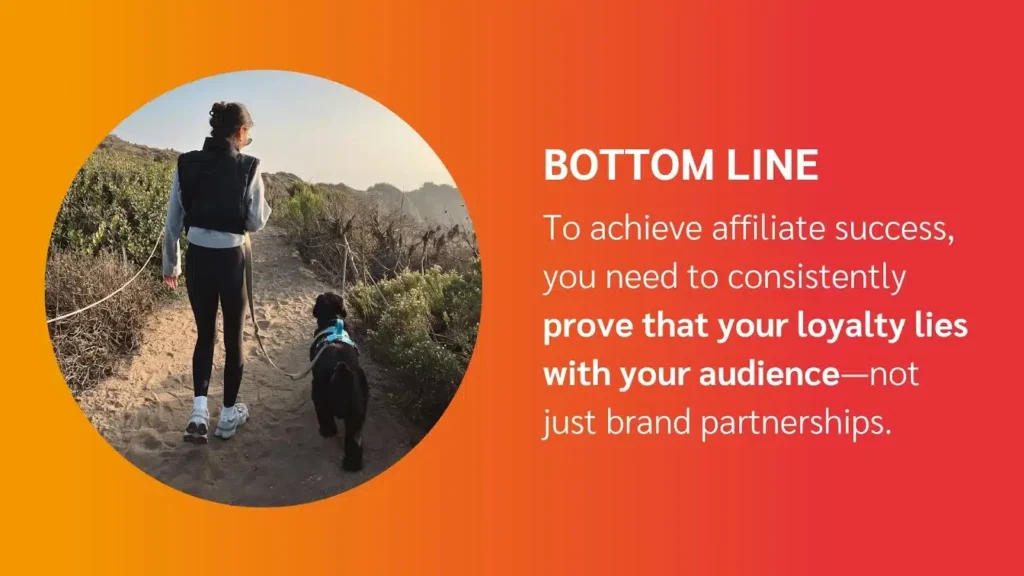
Effective content formats for gaining trust
While the principles of trust are universal, the right content format can make all the difference in bringing them to life:
- Behind-the-scenes content: Showcase real-life product integration to peel back the curtain and make your recommendation feel like a natural part of your life
- Personal storytelling: Share genuine experiences that resonate deeply to create an emotional connection that makes your recommendations feel more like advice from a friend.
- Detailed, honest reviews: Provide balanced pros and cons to boost credibility and prove your primary loyalty is to your audience.
- “Ask Me Anything” sessions: Openly address audience questions and product concerns to demonstrate your authentic relationship with a brand.

In this Instagram Reel, makeup creator Jackie Aina shares her personal struggle with post-chemical peel dryness, then demos how she used a Lancome Serum to heal and restore her skin.
Other techniques for strengthening audience trust
Beyond specific content formats, building trust comes down to:
- Showing your true self. Authentic content builds lasting connections.
- Carefully vetting brand partnerships. Align only with brands you genuinely believe in.
- Being radically transparent. Clearly disclose sponsorships (e.g., “#ad” or explicit mentions).
- Recommending genuinely. Stand behind every product you endorse.
- Practicing accountability. Openly acknowledge when recommendations don’t meet expectations.
- Posting consistently. Regular engagement helps build a dependable reputation.
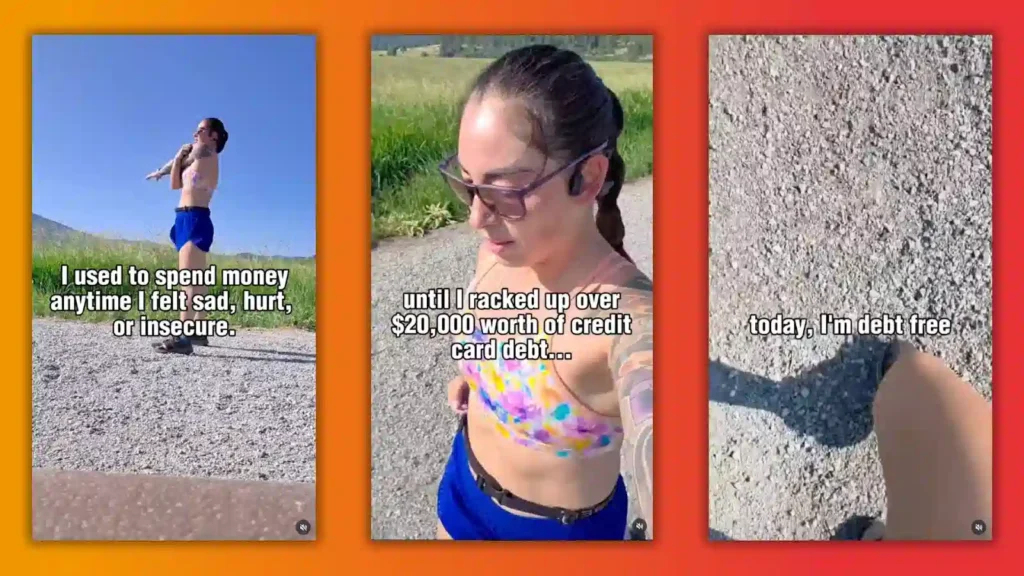
Finance creator Kumiko Love creates credibility by openly sharing her personal financial struggles, demonstrating vulnerability that resonates with her audience.
Strategy 2. Create a content calendar that balances entertainment and affiliate promotion
According to research, the main reasons consumers follow creators are for entertainment (56 percent), education (53 percent), and inspiration (46 percent). Your audience follows you for the value you provide—not for constant sales pitches.
If your content leans too heavily toward promotions, you risk burnout and losing audience engagement.
Instead, create an ecosystem of content that naturally blends value-driven pieces with carefully placed affiliate promotions.

Effective content formats for keeping your audience engaged
Construct your content calendar around a mix of formats that serve different purposes:
- Tutorials and guides: Provide educational value that showcases affiliate products organically and frames it as an essential tool for your audience’s success.
- Inspirational posts and vlogs: Engage emotionally and authentically, indirectly setting the stage for trust-based promotions that feel more like shared discoveries than sales pitches.
- Humorous shorts: Entertain and keep your audience refreshed between promotional posts to purely entertain and prevent promotion fatigue.
- User-generated content (UGC): Feature community posts or success stories to enhance credibility and provide powerful social proof that validates your recommendations.
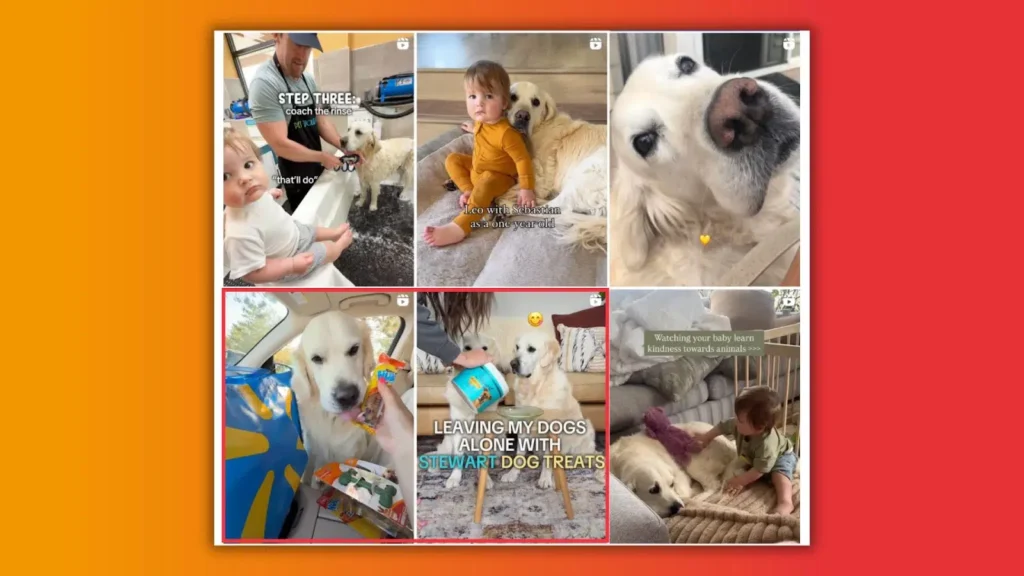
Pet and family creator @leothecream posts a healthy mix of promotional content (highlighted in red) and entertainment, including humorous reels that highlight her dogs’ personalities.
How to create a balanced content calendar
Here are the steps for building a content calendar that engages your audience and drives conversions:
- Set clear content ratios. Aim for a blend, such as the 80 percent value-driven and 20 percent promotional content mix proposed by entrepreneurship YouTuber Charlie Chang.
- Share affiliate links organically. Mention products naturally within educational or entertaining content rather than isolated ads.
- Stay audience-focused. Regularly share content that matches your followers’ primary interests, entertainment, inspiration, or expert guidance.
- Avoid overload. Space out your promotional posts to keep your audience engaged and prevent burnout.

Travel Mexico Solo shares empowering stories of navigating Mexico independently, subtly pairing inspirational travel content with affiliate links to her favorite booking platforms and gear.
Strategy 3. Structure your content around problems that products can solve
People act when a recommendation directly solves a pressing problem they face.
In fact, 24 percent of consumers say they’re more likely to buy when a creator clearly positions a product as a solution to their needs. And since 53 percent enjoy educational content—such as tips, tricks, and how-to tutorials—this approach perfectly taps into audience motivations.
By framing affiliate products as practical solutions, you naturally guide followers toward taking action.
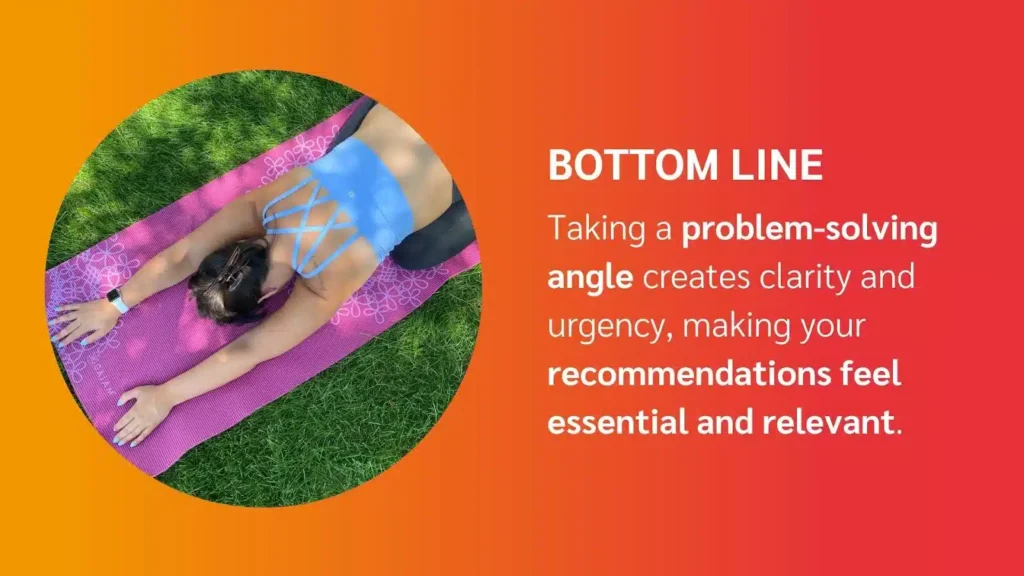
Effective content formats
These content formats are particularly effective at demonstrating a product’s problem-solving capabilities:
- How-to guides and tutorials: Demonstrate exactly how affiliate products solve specific audience challenges to directly answer your audience’s questions.
- Case studies: Share real-life success stories highlighting product benefits, allowing your audience to visualize their own success.
- “Before and after” content: Visually illustrate the transformative power of products to offer undeniable proof of their impact.
- Audience-focused Q&A sessions: Directly address common problems your audience faces and tackle specific objections in real-time.
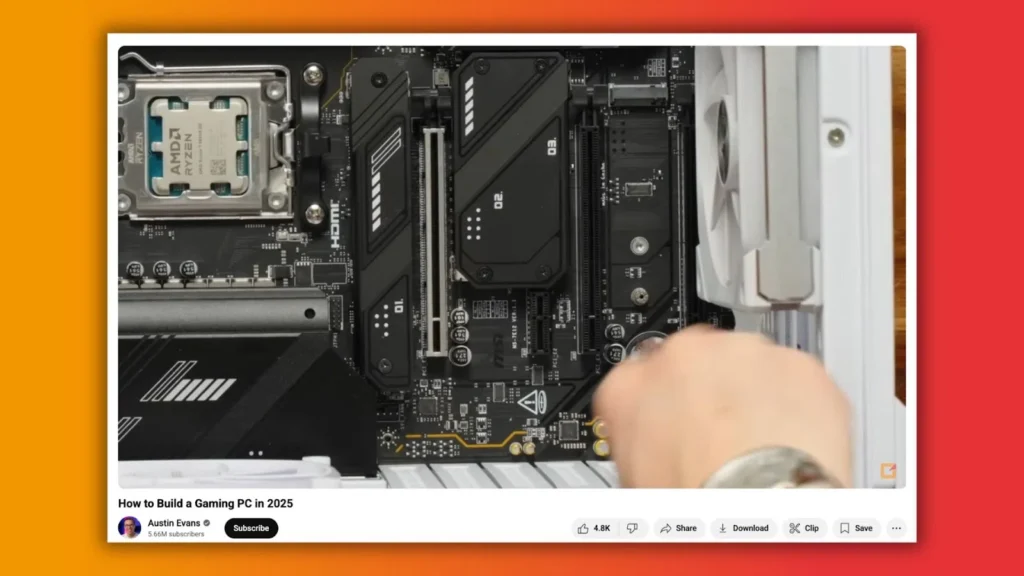
Austin Evans, a YouTuber with over 5.6 million subscribers, regularly provides educational value while showcasing products in action in his detailed tech tutorials. In this video, he includes affiliate links in the description for the exact components he uses.
How to structure problem-solving content
To show a product works and why it’s worth using, incorporate these elements into your content creation process:
- Identify audience pain points. Use polls, surveys, Q&A sessions, or comment analysis to uncover what your audience struggles with most.
- Match products to needs. Carefully select affiliate products that genuinely align with your audience’s specific challenges.
- Clearly showcase the solution. Organize your content around a central problem, clearly demonstrating how the affiliate product resolves it.
- Craft detailed, educational guides. Create comprehensive resources integrating affiliate products as indispensable tools.
- Highlight advantages clearly. Use comparative content to emphasize why your affiliate recommendation is the standout solution.
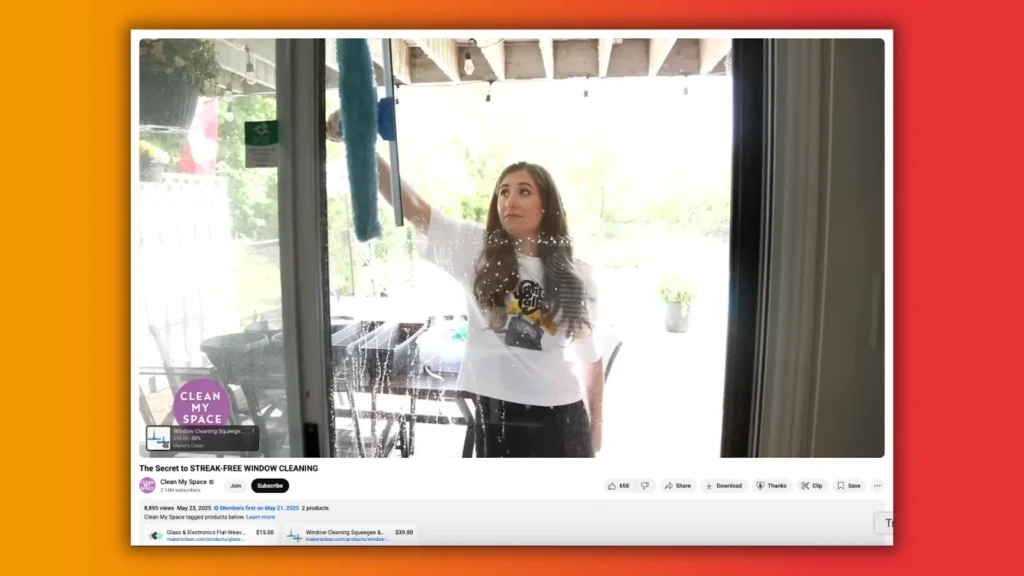
Clean My Space offers a comprehensive tutorial on eliminating stubborn window streaks, seamlessly integrating the specific tools that helped her achieve a flawless, streak-free finish.
Strategy 4. Prioritize content that showcases your firsthand product experience
Your audience craves authenticity, and there’s no better way to convey it than immersive, firsthand experiences.
Research confirms that:
- 35 percent of consumers rank product demonstrations as the top factor influencing their buying decisions
- 57 percent consider influencer content most authentic when it reflects genuine product usage
Simply put, “buying and trying” is far more persuasive than unboxing alone (only 18 percent find unboxings truly authentic).

Effective content formats for showing products in action
To bring your firsthand experience to life, use formats that are designed to show, not just tell:
- Detailed video reviews: Capture the real-life experience of testing and using products to provide an in-depth take that answers questions your audience didn’t even know they had.
- “Day in the life” vlogs: Naturally integrate products into your daily routine to show the product in its most authentic context.
- Interactive social media Stories: Demonstrate product use dynamically on Instagram or TikTok to apply the format’s personal, “in-the-moment” feel.
- Live-streamed product demos: Engage your audience in real time, answering questions and demonstrating features to address concerns on the spot, proving your confidence in the product.
- In-depth blog posts: Use step-by-step guidance and custom photography to visually reinforce your experiences and create an evergreen resource your audience can reference long after publishing.
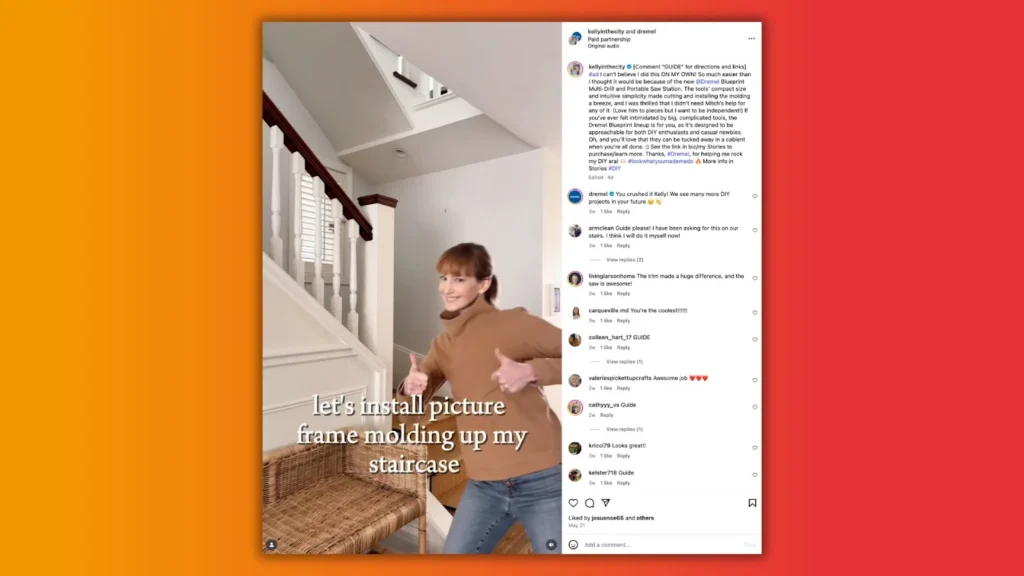
Blogger Kelly Larkin builds trust by demonstrating the Dremel and other tools she personally uses in an in-depth stair molding installation Reel, empowering her audience to tackle complex DIY projects with confidence.
How to create compelling firsthand product content
Here’s how to make your product content more persuasive:
- Show products in real-life settings. Let followers visualize how a product genuinely fits into everyday life.
- Balance pros and cons. Offer transparency by sharing both benefits and potential drawbacks.
- Invest in high-quality visuals. Elevate authenticity and engagement through professional-grade images and videos.
- Proactively address FAQs. Anticipate and answer common audience questions within your content.
- Make buying frictionless. Include clear affiliate links or use shoppable features on platforms like Instagram Shopping or TikTok Shop.

Organizing YouTuber Michelle O’Malley tackles the universal challenge of setting up a new kitchen, expertly showing how various organizers help create a functional and orderly space. She also includes affiliate links to each product in the description of her video for easy access.
Strategy 5. Highlight special deals and discounts to drive conversions
Everyone loves getting a good deal—and a well-timed discount or exclusive offer can be the final trigger that moves a follower from consideration to action.
Research shows 30 percent of consumers are significantly motivated by large discounts when purchasing via an influencer. Meanwhile, 29 percent respond strongly to exclusive offers, and 25 percent are influenced by perks like free delivery.
By lowering the financial stakes of a purchase, these deals reduce the buyer’s perceived risk and drive confident conversions.
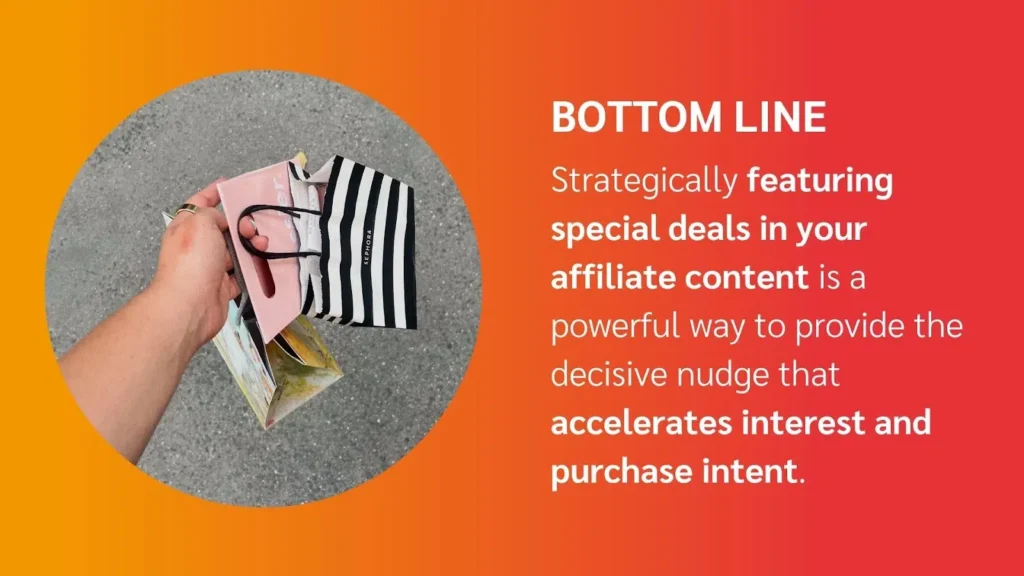
Effective content formats for sharing deals
Want to share your special offers without coming across too salesy? Use formats that focus on value and create urgency.
- “Deal Alert” posts and videos: Spotlight timely, can’t-miss deals clearly and prominently.
- Social media story segments: Share discount codes or limited-time offers dynamically and engagingly.
- Email newsletters: Regularly feature exclusive affiliate promotions, directly reaching your loyal subscribers.
- “Shop With Me” content: Seamlessly integrate offers into authentic shopping experiences.

Creators like @itsmekelsc often post TikTok Shop videos showing products in use and immediately include a “Shop Now” link in the caption, enabling instant conversion while content is fresh.
How to highlight deals effectively
Maximizing the impact of your promotions goes beyond simply posting a code. Use these tactics to present deals in a way that maintains trust and drives action:
- Negotiate exclusive discounts. Work with brands to secure unique codes tailored specifically to your audience.
- Clearly communicate terms. Explain how to redeem deals, any restrictions, and expiration dates.
- Present deals strategically. Offer discounts immediately following content (like reviews or tutorials) that has already established the product’s value.
- Endorse genuinely. Only share deals for products you authentically support to maintain trust and credibility.
When offered with genuine enthusiasm and strategic timing, a good deal can be the final, trust-building step that turns a follower into a customer.
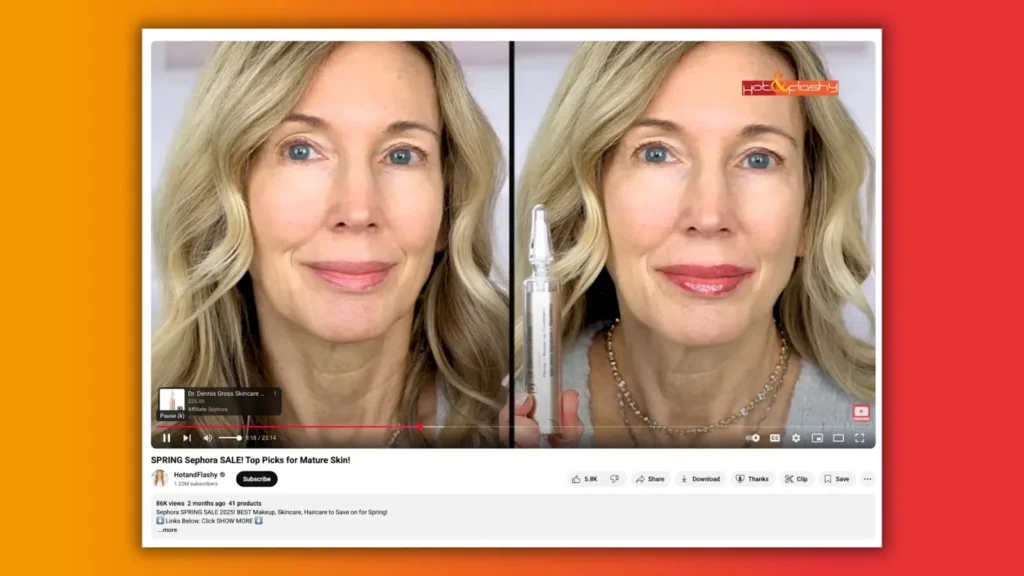
Beauty creator Hot and Flashy’s Sephora sale video presents products she genuinely loves, clearly communicates the sale terms, and empowers her audience to make confident purchases during the event.
Turn authentic content into affiliate conversions
Converting clicks into conversions doesn’t mean turning your content into a sales pitch. Instead, lean into what already works–your authenticity, your voice, and your relationship with your audience.
Build trust through transparency. Showcase brands you genuinely use. And when you do plug a product, make it feel like a natural extension of the value you already provide.
When you combine these research-backed strategies with your unique style, affiliate marketing becomes less about pushing products and more about helping your audience make smart, confident decisions.
Find out more about growing your affiliate income as a creator:
FAQs
What is a good conversion rate in affiliate marketing?
A strong affiliate conversion rate typically ranges from 1 percent to 5 percent. But this varies by audience, niche, and product type. If you’re regularly above 2 percent, you’re generally performing well. Always compare your performance over time to find your own baseline and track improvements.
What is the difference between conversion rate and click-through rate?
Click-through rate (CTR) measures how many people click your affiliate link after seeing your content.
Conversion rate shows how many of those clicks actually result in a sale or another desired action.
Simply put: CTR measures initial interest, while conversion rate measures completed actions.
How can I increase my conversion rate?
Increasing your conversion rate isn’t about mastering secret sales tactics, but about deepening the value and trust you already provide to your audience.
- Build trust. Be honest, transparent, and only promote products you truly use and love.
- Show the product in action. Demonstrations and real-life use help people feel confident buying.
- Focus on solving problems. Explain how the product helps your audience with something specific.
Use clear, compelling calls to action. Make it easy for your audience to know what to do next. - Highlight deals or discounts. Special offers can give people the final push to purchase.
Ultimately, these strategies shift your role from someone who simply promotes products to a trusted guide who helps people make confident decisions.










